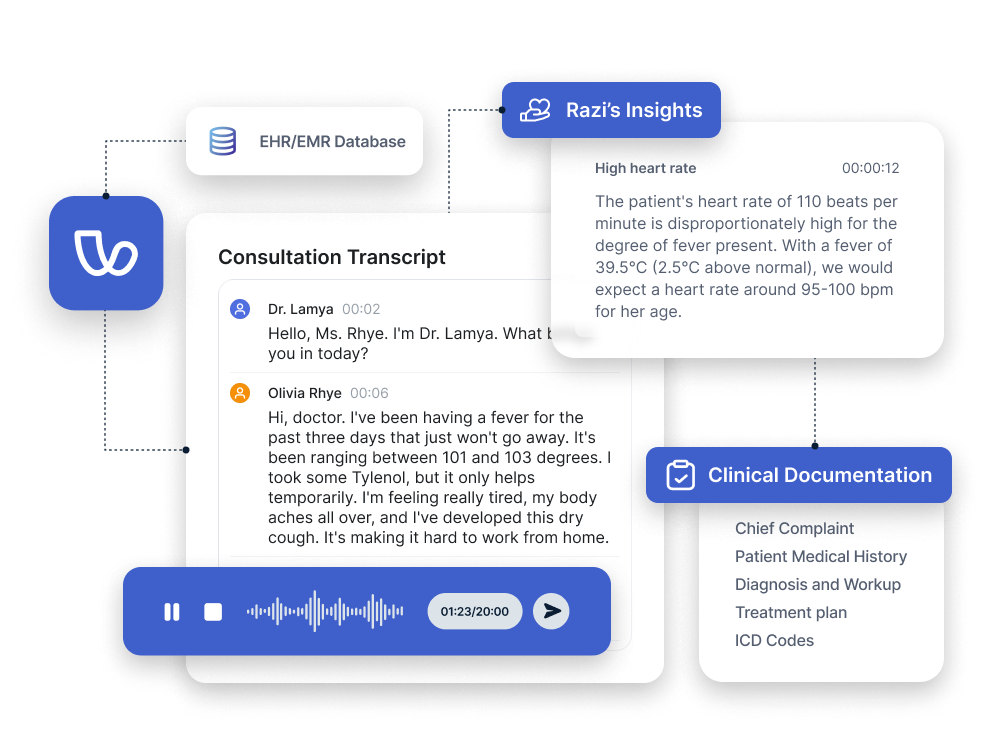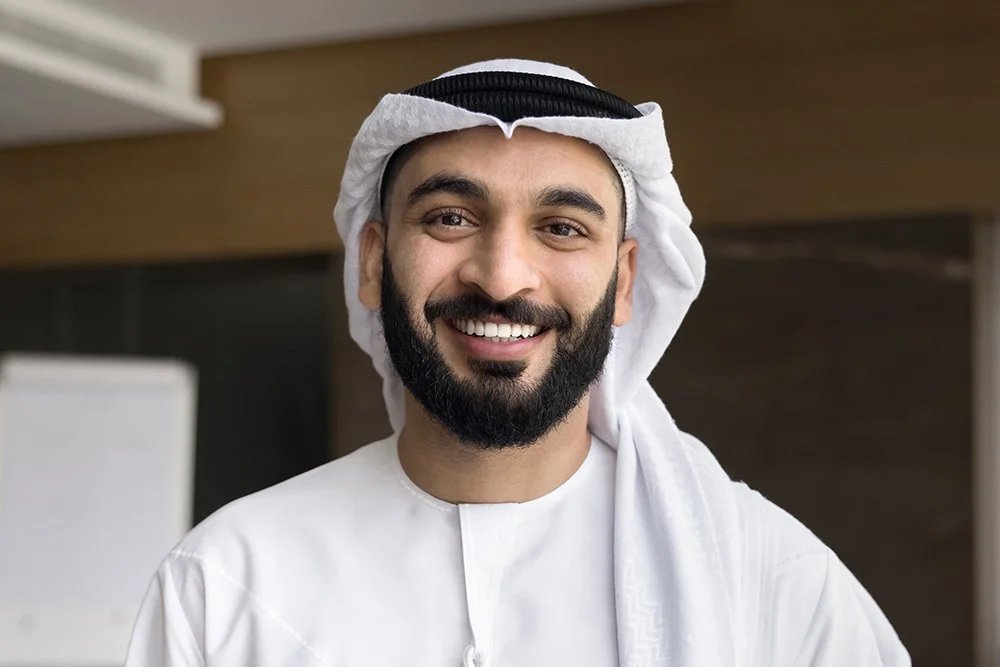
Product Marketing and GTM
Professional Work
September - November 2024
Developing positioning and go-to-market strategy for an AI medical assistant in an emerging market, creating defensible differentiation through localization when US competitors dominated the broader market with feature parity.
I focused on three core areas: developing localization-first positioning strategy, creating regional brand credibility through storytelling, and transforming sales enablement from feature competition to differentiation.
Market Strategy
Positioning
Brand Narrative
Multi-stakeholder Messaging
GTM Execution
Sales Enablement
Market Strategy Positioning Brand Narrative Multi-stakeholder Messaging GTM Execution Sales Enablement
Introduction
Product-market fit is local, not global
The AI medical assistant is a crowded and mature market, especially in the US with players like Abridge, Suki, and Nabla that boasts of 5-9 years of development, extensive partner integrations, and strong enterprise customer bases. They competed on feature parity following the same playbook: comprehensive feature sets, enterprise sales cycles, and continuous feature expansion. In a saturated market against established players, differentiation through features alone would be a losing strategy.
Despite growing digital health adoption, international AI solutions faced three fundamental barriers when entering the UAE: Arabic language requirements for bilingual clinical practice, data sovereignty regulations requiring patient data remain within UAE borders, and integration with regional healthcare systems like MALAFFI and SEHA. These weren't feature gaps that could be patched but demand architectures that these global solutions weren't built to address.
For a 5-month-old product, this created strategic white space: rather than compete on feature maturity against 5-9 year old US incumbents, we could play up our inherent position in the market as the primary differentiator, where established players couldn't effectively compete.

The Key Reality
With a large expat population, UAE physicians see patients from around the world. Some consultations happen in English, others in Arabic, and many switch between both languages naturally. But "Arabic" isn't monolithic. Patients from across the Gulf region speak Egyptian, Levantine, Khaleeji, and other dialects, each with distinct medical terminology and colloquialisms.
Existing AI transcription tools were strong in English but failed with Arabic: they couldn't process dialect variations, broke down during code-switching between languages, and struggled to distinguish between colloquial speech and formal medical terminology. For a truly localized solution, supporting "Arabic" meant understanding the linguistic diversity of the Gulf healthcare context, not just adding a language toggle.
The Opportunity
Create a localization-first product positioning that turns global scale into a weakness. This demands cultural legitimacy, understanding of regional healthcare delivery, and messaging that resonated with how UAE healthcare providers actually worked.

AI Medical Assistant Purpose-built for UAE
Designed for clinical documentation and decision support in UAE healthcare settings, the platform provides ambient transcription in both Arabic and English, automated clinical note generation with ICD-10 coding, differential diagnosis support, and treatment planning assistance. Importantly, it maintains UAE data sovereignty compliance and integrating with regional EMR systems.
Named after the 9th-century Persian physician who pioneered evidence-based medicine and differential diagnosis, the brand draws on the historical medical innovation from the Islamic Golden Age with modern AI technology, creating cultural resonance that global competitors couldn't replicate.
Cultural credibility
Even though the product was already named, the rationale and story was not joined activated in the product communications. I recognized this as a strategic asset for the brand narrative, connecting historical principles with modern AI capabilities.
His evidence-based approach → Our AI-driven clinical insights
His patient-centric care → Our workflow integration (focus on patients, not documentation)
His continuous learning → Our constantly updated medical knowledge base
His ethical standards → Our privacy protection and augmentation (not replacement) of physician judgment

Multi-Stakeholder Messaging Framework
Successful adoption of an AI-based solution requires convincing 3 distinct stakeholder groups: Clinicians, business users, and the overlooked group, patients.
Patients
Better care through undivided attention, protected by local data privacy
Clinicians
Reclaim time for actual patient care by eliminating documentation overhead
Business
Reduce claim rejections and protect revenue with compliant documentation
activation
Product Highlights Video
Slide library for Sales Enablement
Landing Page

Collaborative dynamic
Product-led team structure as competitive advantage
One of our strategic advantages came from how the team was structured. As the product marketing manager embedded directly within the product team, I participated in the iterative product development cycle from the beginning (not as a downstream recipient of finished features!) but as an active contributor to product decisions.
Compared to traditional processes where marketing sits at the end of the product development process, I could develop a position and brand narrative that complemented the product experience the team was building, rather than retrofitting stories or selling points.
I understood the technical capabilities deeply enough to position them accurately
Messaging could be consistent across product UI, sales conversations, and marketing content
Sales enablement materials reflected actual product capabilities, not aspirational features
Working alongside the product director, technical founders, and commercial director created a tight feedback loop, forming a unified team tackling user and audience needs comprehensively from all angles- product, technical architecture, sales approach, and marketing positioning- simultaneously.
Why this mattered for a young product
Being 5 months old competing against 5-9 year old US players, we couldn't win on feature breadth or market maturity. The one place we could bet on was strategic coherence. Securing a pilot acquisition within 6 months (in a typical 9-12 months sales cycle) was the result of a product-led team where positioning was informed by development and development enabled positioning, where both evolved together based on market feedback. That integrated approach was our competitive advantage against larger, more rigid competitors.
“Yuzu is a rare mix of all the right pieces it takes to excel in modern marketing - empathetic understanding of users and the gap in their understanding of AI, what it means to have a cohesive voice behind a product, and the ability to translate complex technical concepts into compelling content. Her amazing eye for design and strategic content development consistently elevates our product messaging. With just the right amount of AI background, she deeply internalizes and conveys the how, what, and why the world needs a product through every piece of content she creates. It is wonderful to work with her to bring the product to life through fresh ideas and engaging storytelling.”
Product Director and Reporting Manager
Reflections
This was my first experience working in a truly product-led environment, and I'm deeply grateful for what that taught me. Being embedded in the product team from day one created better outcomes than any traditional marketing handoff ever could. It showed me that the best product marketing happens when you're building the strategy alongside the product, not retrofitting it afterward.
Gratitude for the team: What made this work special was the team itself. Everyone put in their absolute best because we genuinely believed in what we were building. For a 5-month-old product competing against established players, that collective commitment was everything. There were uncertainties daily, but the team's willingness to move quickly, stay agile, and rise to each new finding created momentum that a young product desperately needs. This would not have been possible without the insight and guidance from our Product Director, who made all the difference between scattering our efforts and focusing on what actually mattered. We accomplished more in six months than I thought possible, and that's a testament to your leadership and our collaboration.
The path forward that didn't happen: In early 2025, the company was acquired. The new strategic direction shifted toward bespoke solution offerings, and our development continued on a different trajectory than we had envisioned.
Had we continued on the original path, I believe we would have realized our vision of being "the AI medical assistant for UAE healthcare". We had the strategic foundation, proven demand, ripe market timing, and a stellar team to deliver on this. That's the opportunity that remains. The UAE healthcare market still needs a purpose-built AI medical assistant that understands Arabic consultations, respects data sovereignty, and integrates with regional systems. The barriers we identified haven't disappeared. The differentiation strategy we developed still holds.
I'm so proud of what we built, even if we didn't get to see it fully realized.









